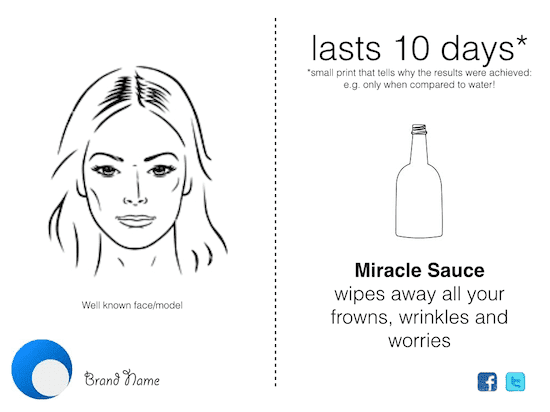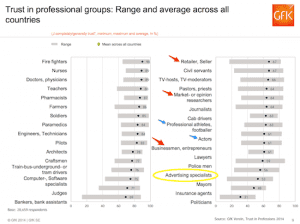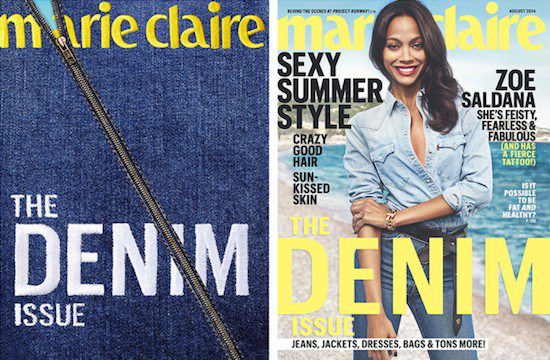Some brands are brought up on a particular style of communication. Type face, Pantone color, size and brand position are all highly regulated across a specific set of formats. Inked in so-called brand charters, these brands insist on a rigidly defined set of guidelines. For some brands, meanwhile, the effect of the multiple digital channels has put the head office teams on a continuous back foot, struggling to keep up with the evolving formats.
Trust me not
When it comes to “old-fashioned marketing” in magazines — aside from a rather strict way of signing the brand — many marketing teams seem to be rutted in a singular layout, that has been passed down from marketing manager to marketing manager. Where such a style and content might have worked — despite the (internal) rolling of the eyes — in the past, it now seems that the time for pulling wool over the customers’ eyes is hopelessly passé. It’s a case of what I would call: “trust me not” marketing.
Rubber stamp marketing


For the most part, print advertising remains rather well codified. Other than the middle of the book, the fold plays a critical role in the double-page spread (DPS) layout. For most, the obvious approach is to have distinct left-hand and right-hand pages. According to one school of thought, the right page — where the eye typically falls first while perusing — has a particular importance. Here is the basic template that you can observe in one ad after another. It’s almost a boilerplate. When I look at certain fashion magazines, the double-page and single-page ads seem to meld into one another. Despite my having worked for an FMCG company for 16 years, I still wonder how brand marketers measure the return on investment of these standard ads. The formulaic approach, where the model and flavor-of-the-month new product revolve through the ads in the same positions, is there any surprise the customer is confused? To the extent marketers and advertising executives continue to have rock bottom trust levels with consumers, you wonder why brands are not trying harder to counter the lack of trust (lack of respect?).
Attempts to gain trustworthiness
All marketers know that they need to find ways to stand out. The old fashioned mindset looks like this: write “new,” if possible add fuchsia or bright red, make the product the hero, and hopefully find a piercing tagline. In a world of over-populated messages, the risk is always to push the boundaries in the claims and promises. Thus, we have the consequent lack of trust. The options on which many brands fall back to garner some level of trust, include:
- Hiring a celebrity spokesperson
- Obtaining the endorsement of an academic / institution (i.e. a professor, a doctor…)
- Scientific proof or claim
Yet, few people — and even fewer people of influence — will be fooled into believing that such and such an academic has not been paid “off” or that any actor is truly enamoured with the said watch, deodorant or car. The celebrity spokesperson is just a paid gun. Some are spread around so thinly, it’s a wonder brands get any recall (see Kate Moss, for example). I remain skeptical about the value and persuasiveness of a celebrity spokesperson, or even an academic endorsement.
Mumbo jumbo science – trust me not at all
Another way to gain customer confidence is by providing proof of scientific performance. Cosmetic companies like to use science in order to demonstrate the invisible, intangible and sometimes improbable performance of their skin or hair products. I read in a recent ad for a new product launch from a premium hair care brand the following “scientific” claim:
72 hours frizz and humidity control* – Instrumental test shampoo + fluid + masque vs. Classic shampoo
They put that up that trio against a “Classic shampoo”? When comparing a “regime” of three products against a classic shampoo, you’re almost left wondering what else you should be getting for the value?
Innovative print
In the face of a moving landscape and the digital wave, some magazine publishers are innovating. Via the Business of Fashion, I discovered how Marie Claire US has been doing some interesting explorations and experiences with its cover.

I wait for more of the big brands to embrace the spirit of innovation to make for different experiences in their ads — taking advantage of the multiple touch points and formats to create a more creative (and yet more believable) message. This will take not a small breaking of a quasi institutionalized format. Your thoughts?











Trackbacks/Pingbacks